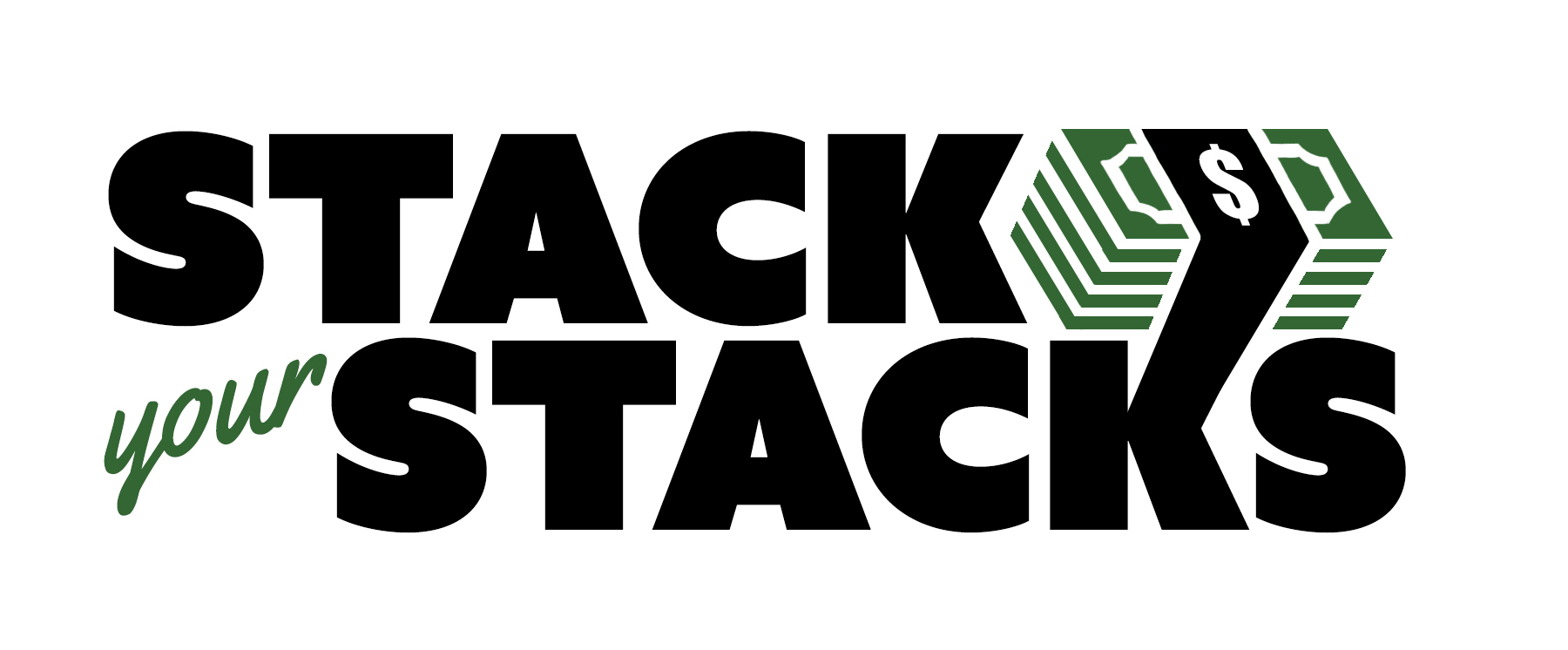How Can You Get One Month Ahead On Your Bills (ASAP)
A little cushion in your bank account offers comfort and stability in stressful financial situations. One of the first steps in doing this? Get a month ahead on your bills so that you’re not living paycheck to paycheck.
When you’re a month ahead, there should always be enough money in the bank account to fully cover your expenses. This means you aren’t worrying if there will be enough cash when the gas bill hits or if you’re going to overdraw your account to pay rent. It opens up some freedom in managing your money.
Getting ahead of your bills can seem like an impossible task, but there are some simple steps that can help you get there.
Disclaimer: This post is for educational purposes only and should not be construed as financial advice.
Disclosure: This post may contain affiliate links or referral links. I may earn a commission or credit if you make a purchase or sign up.

Benefits
Let’s start with a little motivation! There are many benefits to being a month ahead on your bills, and knowing these will help keep you determined to achieve this goal.
Here are a few reasons to pursue this:
- You won’t be late on bills. Once you’re a month ahead, you’re essentially paying this month’s bills with last month’s income. That takes away the fear of not having enough, an ensures you can pay your bills as soon as they arrive. You will avoid late fees and penalties.
- Reduces stress. If you’ve got a buffer in your bank account, you’ll have less financial stress. Plain and simple. The key is simply not to spend that buffer. (For example, I still always make sure I have $1500 minimum in my checking account at any time, instead of simply trying to stay above $0. $1500 became my new $0.)
- Helps improve your budgeting skills. We’ll look at how to do this in the next section, but budgeting is a part of it. When you work towards being a month ahead, you’ll refine your budgeting skills – and this should only help you to continue to propel success afterwards.
- Keeps you on track with your spending. Once you’re a month ahead on your bills and sticking to your budget, you’ll be less likely to spend money unnecessarily, as you can see the results of reaching financial goals.
How To Get One Month Ahead on Your Bills
You are feeling all jazzed up about this plan – but how do you actually achieve it?
By far, the most important first step in getting a month ahead on your bills is (drum roll please)…
Create a budget and stick to it.
It’s not the flashiest method, and it’s one you’ve probably heard a billion times. But it is a fundamental key to financial success at the beginning when you are living paycheck to paycheck.
Here are the steps in creating a budget for your family:
1. Write down how much you make each month.
How much money do you actually take home each month? You don’t want to budget based on your annual salary, as you won’t account for taxes and other deductions like health insurance.
Instead, look at your paystubs and see how much is actually hitting your bank account each month. Do the same for your spouse (if you have one and they’re earning money).
Note: If you’re a gig worker or self-employed, this can be difficult, as you may not have consistency in your earnings. I recommend looking at averages, or budgeting based on your lowest take home month.
2. Look at your last 3 months of expenses.
Dig up those bank statements and credit card statements, and categorize all the expenses each month for the last three months. For example, your categories might include mortgage, home insurance, car insurance, groceries, take-out food, medical expenses, etc…the list could go on and on. Write these down monthly per category.
Yes, it will take some time, and yes, it’s no fun. But this is essential to understanding your actual spending.
For example, you might add up all your grocery costs and write down something like:
- August – $650
- September – $526
- October – $742
That would be the total amount you spent on groceries in each of those months.
Include any debts that you’re paying off too, like your student loans or credit card payments. Anything that you spent money on should be categorized.

3. Create averages.
Now take each category, and calculate the average by adding up the three month totals and dividing by three.
In our grocery example above, that would look like:
$650 + $526 + $742 = $1918 / 3 = $639
That would mean you spend an average of $639/month on groceries.
Repeat for all the categories.
You should also look at an overall average for the total expenses over the three months.
4. Assess and strategize.
Now it’s time to assess. Start with a very basic comparison – look at your actual spending compared to your income.
If you’re lucky, your average expenses may be less than your income, and you just need to do some refining to save a little extra towards your goal.
But if your total average expenses are higher than your income, there are only two solutions: make more money, or spend less money. There’s no other way to make the math work.
Start by looking the categories with the highest average monthly spending, and seeing if there’s a way you can reduce those expenses.
You can also look into different ways to make money, if it’s feasible for you.
Once you implement either of these (or both), your goal is to create a budget with expenses less than income, so that any additional money can be saved to get you a month ahead on your bills.
Spend Less Money
You can find a ton of frugal money-saving hacks on our site, but below are a few ideas to get you started on your journey. Look through these ideas in a few categories and compare them to your own budget. Are there strategies you can implement to reduce that category?
Groceries
- Meal plan, making use of cheap foods in the meals you plan and shopping only from your list. (Here are a few of my favorite healthy frugal breakfasts that may be helpful!)
- Use apps like FlashFood to find great deals, and planning your meals around those foods
- Shop only the “loss leaders” at major supermarkets, and get the rest of your items at a low-cost store like ALDI or Walmart.
- Buy generic rather than name-brand.
- Check out discount or salvage grocery stores if they have any near you
- Make substitutions based on what you have on hand. For example, if you have a recipe that calls for kale but you have spinach on hand already, use that.
- Look into programs like SPAP if you qualify. They are there to help you!
Car
- Avoid the temptation to upgrade cars. Stick with what gets you from point A to point B for the longest time safely possible.
- If you have a high car payment each month, see if you might be able to sell the car and come out ahead. You can take the cash and pay for a decent used car.
- If you’re a two-car family, consider downsizing to one car. Use the money from selling the second car towards getting a month ahead on your bills.
- Shop around for cheaper car insurance. Evaluate the type of coverage and what you actually need for your car.
- Utilize walking, riding a bike, or public transportation when possible.

Utilities
- Try lowering your cell phone bill by switching to a low-cost carrier like Mint Mobile. When I switched, I went from paying $80/month on Verizon to just $15/month on Mint. That’s an easy quick switch that leads to a lot of cost savings over the year.
- Unplug electronics when not in use.
- Set the thermostat a bit lower in summer and a bit higher in winter, to reduce heating and cooling costs. According to the Department of Energy, turning your thermostat back by 7°-10°F for 8 hours a day can save you 10 percent a year on heating and cooling costs! For example, if you set your thermostat for 70 degrees during the day in the winter, you might set it to 63 degrees at night.
- If that sounds like too big of an adjustment, keep in mind this translates to about a 1% savings for each degree, so you could still save money even by dropping just a few degrees consistently – like changing from 70 degrees to 68 degrees all day.
- Wash clothes on cold instead of hot. Dry on a drying rack when possible.
- Check if your electric company offers different pricing based on time of day, and if this works for your family. Some companies may charge less during off-peak hours, and you can do things like run your dishwasher or dryer during this time.
- Some internet providers offer discounted service for low-income families. If it fits your income level, it might be an option for lowering that bill.
Entertainment
- Do an audit of your subscriptions and streaming services, and cancel any that you don’t use regularly. (Even if you do use them all regularly, consider if you can live without any for a while).
- Switch from eating out to cooking a new meal together as a family at home. Or use apps like Too Good to Go to enjoy discounted takeout from restaurants and bakeries near you.
- Scout out free festivals and events around town. For example, my town holds a Christmas tree lighting with a bonfire and crafts every December, and holds concerts on the town common every summer. These are great events that don’t cost a dime.
- Avoid buying books and movies; save money on books and movies by using the library instead (for the time being!).
Housing
- This is a big one, but bear with me: Look for less expensive rentals, or sell your home and downsize to a smaller house. Maybe moving to a lower cost of living area would help as well. These options may not always be feasible, but they’re also typically written off before thoroughly considering them. It’s OK if they’re not right for you, but worth giving some thought.
- Shop around for cheaper home insurance. See if you can get a discount by bundling with your car insurance.
- Avoid aesthetic home buys until you’re more comfortable in your financial situation (for example, throw pillows, candles, art work, etc). Even if they’re a good deal, they’re not necessarily a good purchase right now.
Make More Money
While you might feel trapped in your current position (for whatever reason – stability, lack of education, etc.) – know that there are plenty of opportunities out there for you. Here are a few ideas for making more money:
- If you currently have a job but it doesn’t pay enough to meet your family’s financial needs, consider negotiating for a raise – or searching for another position that will meet your needs. This will often be the biggest factor in sustainable higher income.
- Are you a stay-at-home mom that’s not working because you want to be home with your kids? Maybe you can pick up some work on a few evenings a week after your spouse returns. For example, you might pick up some shifts at a restaurant. Or maybe you work at the play area at a gym, where you can bring your kids along with you.
- Pick up some gig work on the side, like Uber, Door Dash, Amazon Flex, Walmart Spark, etc.
- Create a side hustle. Maybe you can start your own tutoring business a few evenings a week, try freelance writing for other bloggers, start a crochet business selling your handmade goods, or you cultivate those photography skills into taking family photos on weekends.
- Sell household items and clothes that you no longer use. This isn’t going to provide long term cash flow, but is great for a quick win. You can use Facebook marketplace, Craigslist, or (when it comes to nicer clothing items) an app like Poshmark.
- Try looking for on-demand shifts in hospitality, manufacturing, and customer service via Instawork. (As a bonus, when you sign up for Instawork with this link, you’ll earn a $50 bonus after you complete your four shifts.)
- If you can be disciplined with it, you can also earn money through bank account bonuses and credit card rewards. However, it’s essential that you don’t let this lead to more spending. For example, when I open a new credit card that offers cash back bonuses with minimum spend, I use my standard bills and expenses to meet that – I don’t add extra expenses.

Making Progress
Once you put these strategies in place, you should have a plan where your income exceeds your expenses. Anything extra can go towards building that cash buffer that puts you one month ahead on your bills.
You’ll likely make the quickest progress by implementing strategies that both earn extra money AND strategies to save on expenses.
For example, let’s say your average monthly expenses total $3500 and your income is $3500. Here’s how you might get a month ahead on your bills in just 90 days without any super intense changes:
- Cut groceries from $600/month to $450/month = $450 saved in three months
- Switch car insurance to save $30/month = $90 saved in three months
- Switch from weekly takeout ($50/wk) to a Too Good to Go order ($6/wk) = $44/week saved = $528 saved over three months
- Switch two phones from a $150/month plan to Mint at $30/month = $360 saved in three months
- Sell random household good and clothes = $200 made in three months
- Pick up two nights per week of gig work or freelance work for a couple hours = $150/week = $1800 made in three months
These changes would total $3,428, and saving that money would put you just about one month ahead of your bills at the end of those three months.
Looking Ahead
Once you’ve met that goal, you can consider your next financial objective.
For example, it is wise to also have a separate emergency fund that can be used – like it sounds – for emergencies (for example, an unexpected medical bill, plumbing disaster, or to cover expenses after a job loss). It’s smart to save up 3 to 6 months of expenses for this emergency fund. This might be a goal that you pursue after giving yourself a little cushion by getting a month ahead on bills.
Or your next goal might be paying off consumer debt, which will create more breathing room in your budget.
The Bottom Line
Getting a month ahead of your bills may seem daunting, but it’s possible. There’s no magic formula to make this happen; just hard work of either budgeting better, spending less, and/or earning more. Little by little and month by month, with a good budget, you’ll be surprised at how much you can save. You’ve got this!






